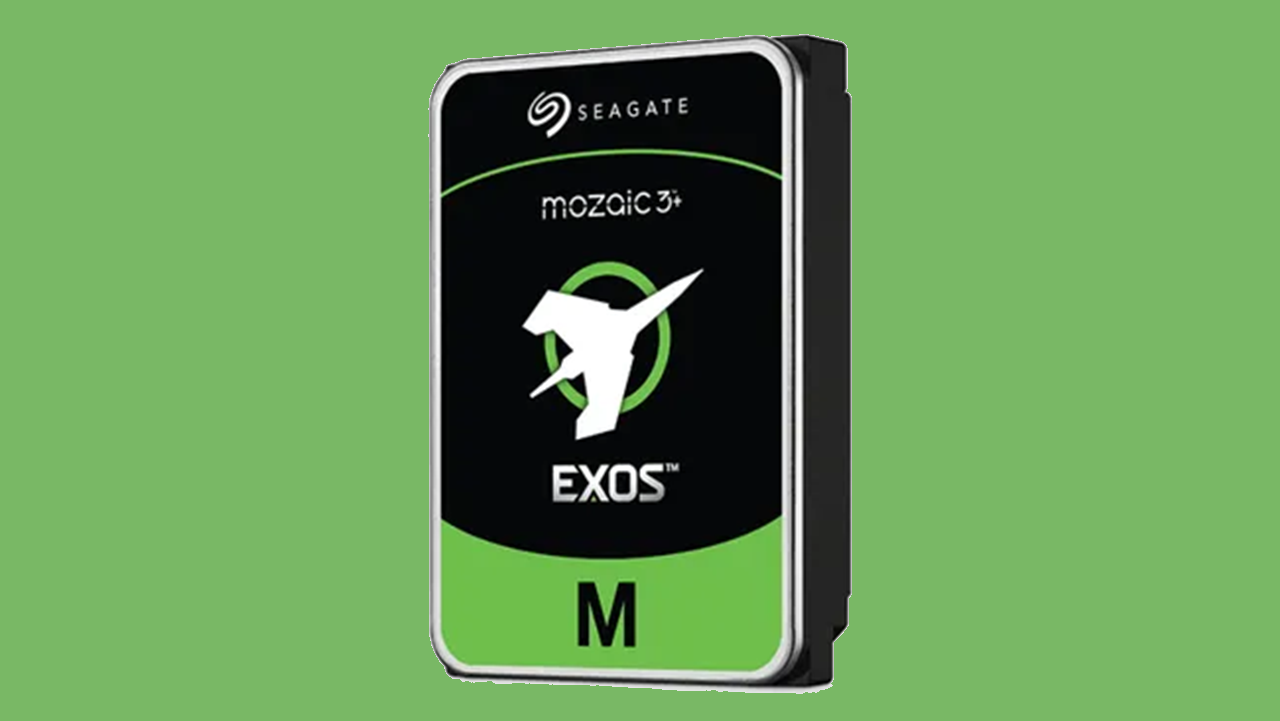
Seagate’s biggest-ever hard drive is finally here, coming with 32TB of capacity courtesy of the company’s new HAMR technology (via Expreview).
It has almost been a year since Seagate said it had finally made a hard drive based on heat-assisted magnetic recording (HAMR) technology using its new Mozaic 3+ platform. A HAMR HDD has long been anticipated since Seagate started experimenting with the technology in 2007. For over a decade, Seagate has predicted HAMR-based drives would be released within years, but these predictions fell apart year after year until now.
Exos drives based on Mozaic 3+ were initially released to select customers in small quantities, but now the general release is (nearly) here, thanks to mass production. Coinciding with this, Seagate silently published the product page for its Exos M HDDs, which includes a 32TB model using the shingled magnetic recording (SMR) storage format and a 30TB model using conventional magnetic recording (CMR).
There seems to be a little confusion at Seagate whether its HDD is the Exos M or Exos M 3+. The product page simply calls it the Exos M and a video published by Seagate’s official YouTube channel also says Exos M, but the URL says “exos-m-3-plus,” and the video title mentions the Exos M 3+. We’ve reached out to Seagate to clarify the naming situation.
Unlike the first Mozaic 3+ HDDs, Exos M drives are compatible with existing computers, which is pretty important to achieve mass adoption. Requiring new hardware to use the new HAMR hard drives would obviously be a significant obstacle and downside to upgrading. Whether that means Exos M is substantially different under the hood from the original Mozaic 3+ drives is unclear at the moment, though; the product page doesn’t offer very many details in that regard.
Seagate’s main competition in high-capacity HDDs at the moment is Western Digital, which launched ePMR-based drives in October, which included a 32TB model. Technically, Seagate released its 32TB HAMR drive first, but WD seems to have been the first to a general release. Either way, the two companies are about neck-and-neck in the capacity race, but Seagate might have the upper hand for future releases thanks to HAMR.







